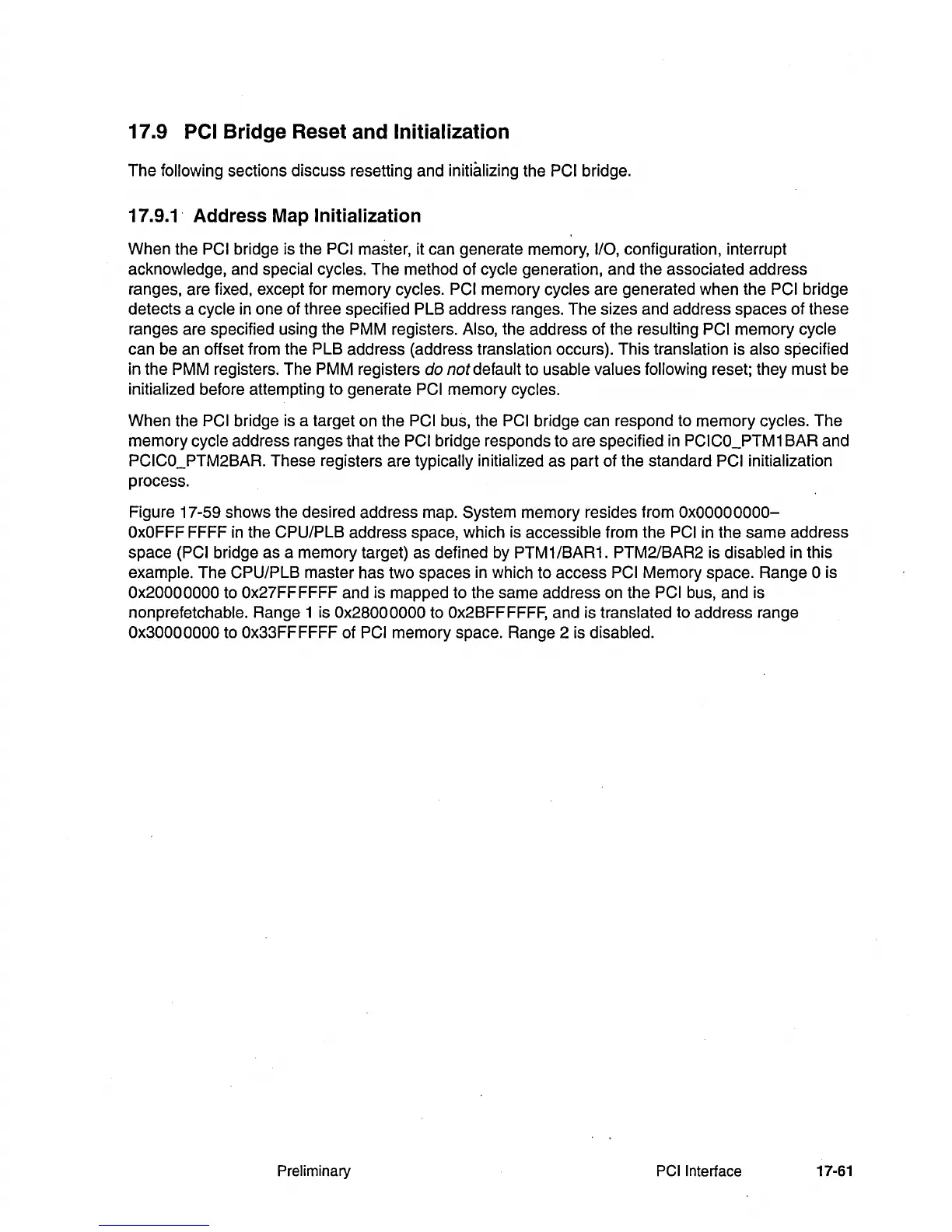17.9
pel
Bridge Reset and Initialization
The following sections discuss resetting and initializing the PCI bridge.
17.9.1· Address Map Initialization
When the PCI bridge is the PCI master, it can generate memory,
110,
configuration, interrupt
acknowledge, and special cycles. The method of cycle generation, and the associated address
ranges, are fixed, except for memory cycles.
PCI memory cycles are generated when the PCI bridge
detects a cycle
in
one of three specified PLB address ranges. The sizes and address spaces of these
ranges are specified using the PMM registers. Also, the address of the resulting PCI memory cycle
can be an offset from the PLB address (address translation occurs). This translation is also specified
in the PMM registers. The PMM registers
do
notde1ault to usable values following reset; they must be
initialized before attempting to generate
PCI memory cycles.
When the
PCI bridge is a target on the PCI bus, the PCI bridge can respond to memory cycles. The
memory cycle address ranges that the
PCI bridge responds to are specified
in
PCICO_PTM1 BAR and
PCICO_PTM2BAR. These registers are typically initialized as part of the standard PCI initialization
process.
Figure 17-59 shows the desired address map. System memory resides from
OxOOOOOOOO-
OxOFFF
FFFF
in
the CPUlPLB address space, which is accessible from the PCI in the same address
space
(PCI bridge as a memory target) as defined
by
PTM1/BAR1. PTM2/BAR2 is disabled in this
example. The CPU/PLB master has two spaces
in
which to access PCI Memory space. Range 0 is
Ox20000000 to Ox27FFFFFF and is mapped to the same address on the PCI bus, and is
nonprefetchable. Range 1 is
Ox28000000 to Ox2BFFFFFF, and is translated to address range
Ox30000000 to Ox33FFFFFF of PCI memory space. Range 2 is disabled.
Preliminary
PCI Interface
17-61

